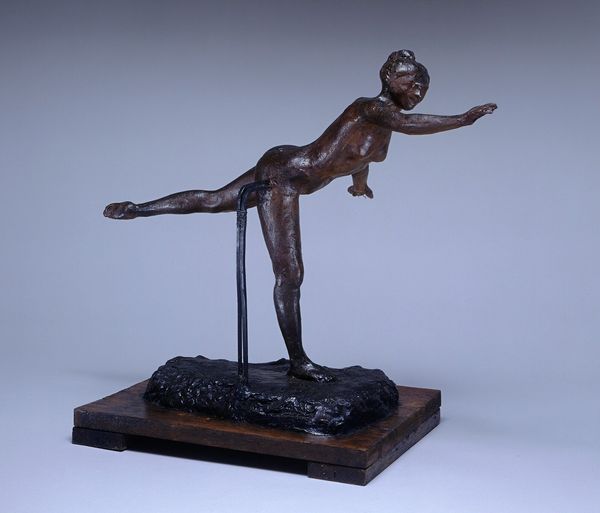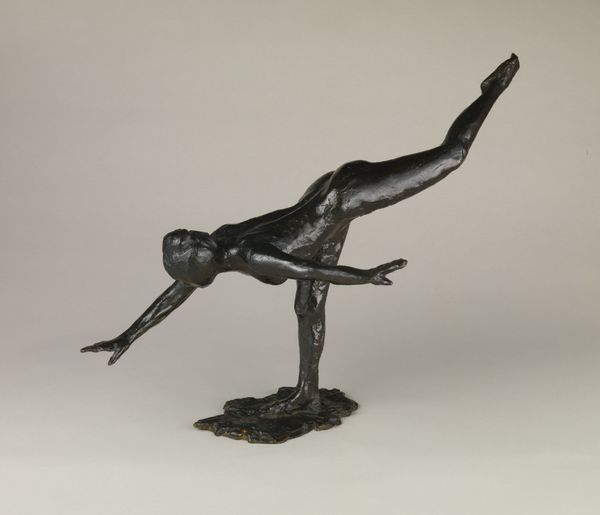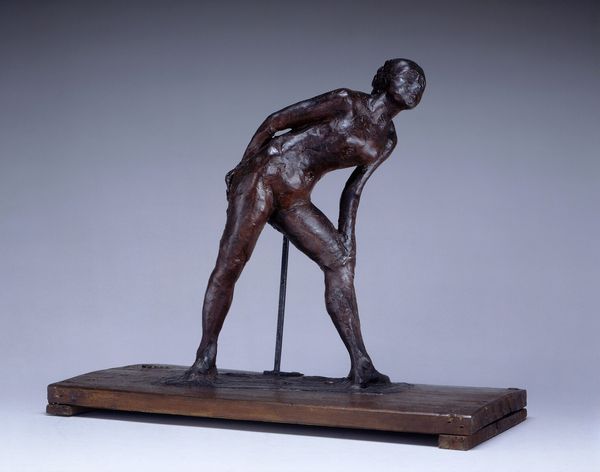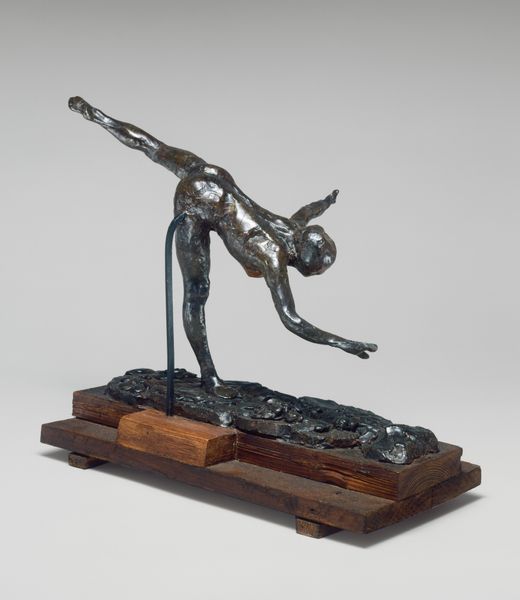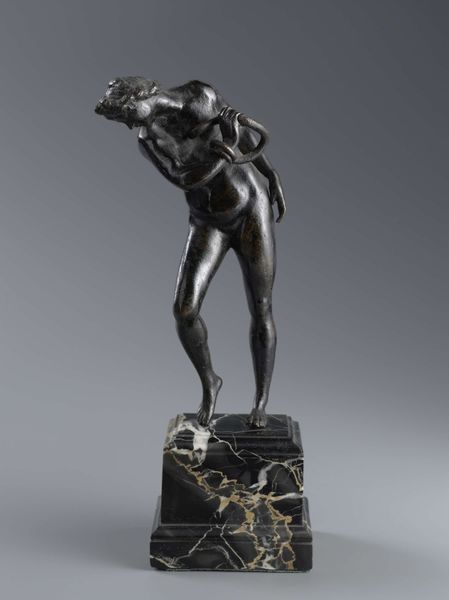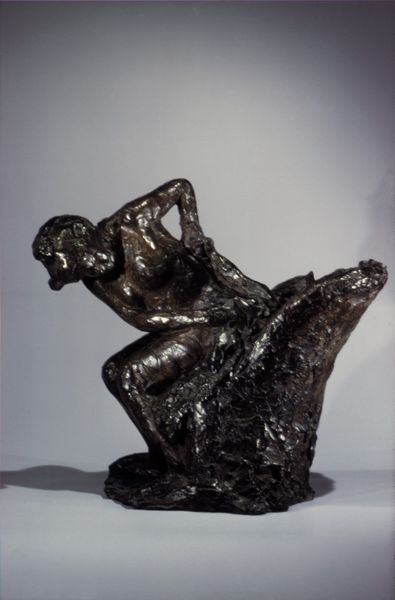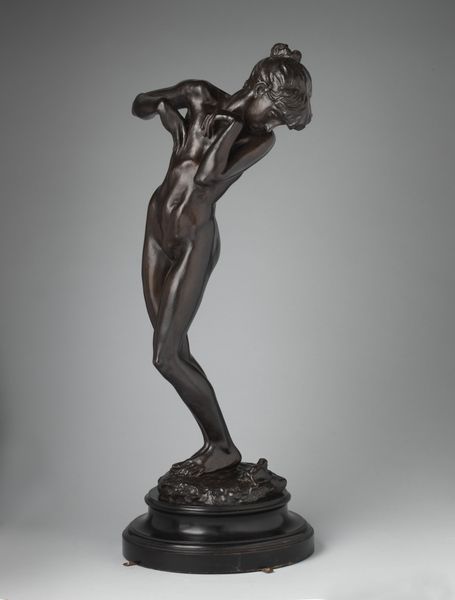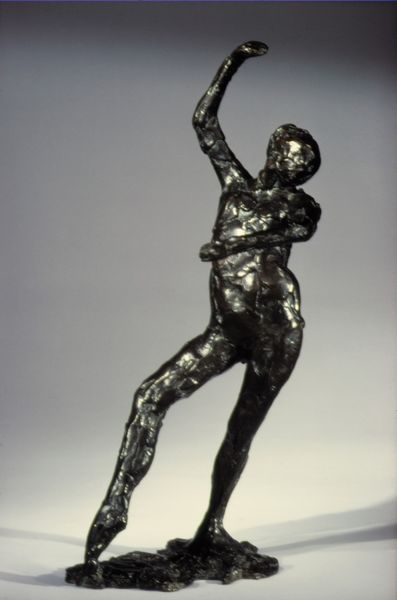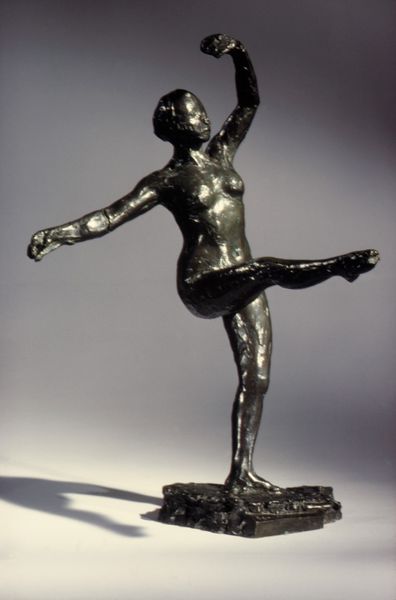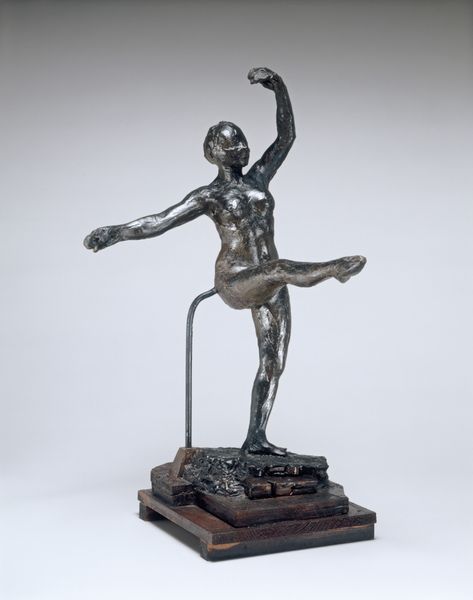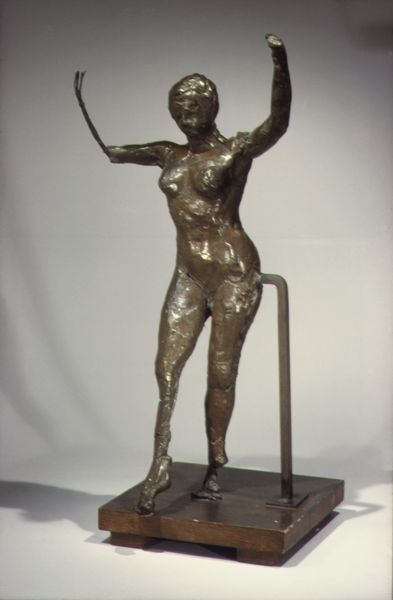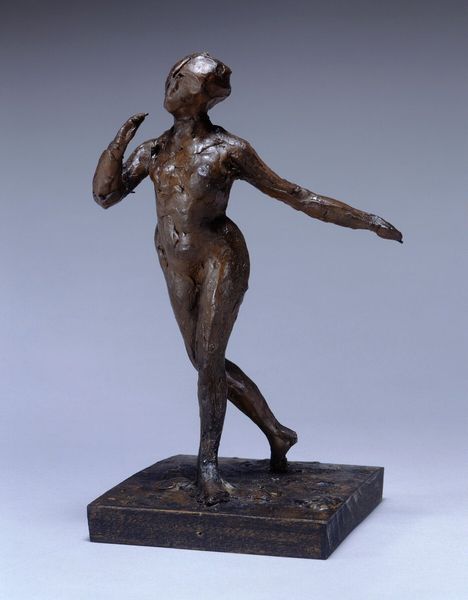
bronze, sculpture
#
impressionism
#
sculpture
#
bronze
#
figuration
#
sculpture
#
decorative-art
#
charcoal
#
nude
Dimensions: 11-3/8 x 15-1/4 x 6-1/4 in. (28.9 x 38.7 x 15.9 cm.)
Copyright: Public Domain
Editor: Here we have Edgar Degas's "Second Arabesque," a bronze sculpture created sometime between 1850 and 1920. It’s such a dynamic pose; she’s frozen mid-motion, perfectly balanced. What do you see in this piece, beyond the obvious grace? Curator: The pose certainly arrests the eye, doesn’t it? But let's consider Degas's historical context. Ballet, during his time, wasn’t just entertainment; it was a profession often exploitative of young women, many from impoverished backgrounds. The graceful facade masked grueling physical labor and societal pressures. Do you think Degas romanticizes this figure, or does he offer a more critical lens? Editor: That’s interesting. I hadn’t considered the darker side of ballet. Perhaps there's a tension between the beauty of the form and the implied struggle. The bronze itself is rough, not idealized like classical sculptures, which almost acknowledges the physical effort. Curator: Exactly. The Impressionists aimed to capture fleeting moments but also modern life's realities. Think about the male gaze present in art history; this sculpture allows us to explore female bodies outside the common Victorian representations. How do you think viewing her now differs from its original audience's perspective? Editor: Now, there’s more awareness about body image and pressures on dancers, so we might be more attuned to potential issues of exploitation that are hidden under the veneer of elegance. Curator: Precisely! The sculpture, therefore, can ignite dialogue surrounding gender, labor, and representation, which in turn helps contextualize art's role within larger political and cultural conversations. Editor: It’s incredible how one sculpture can hold so many layers of meaning once you start unpacking its social context. Curator: Absolutely. Art can serve as both a reflection of and a catalyst for social change, prompting us to confront uncomfortable truths and inspiring new modes of seeing and knowing.
Comments
No comments
Be the first to comment and join the conversation on the ultimate creative platform.

